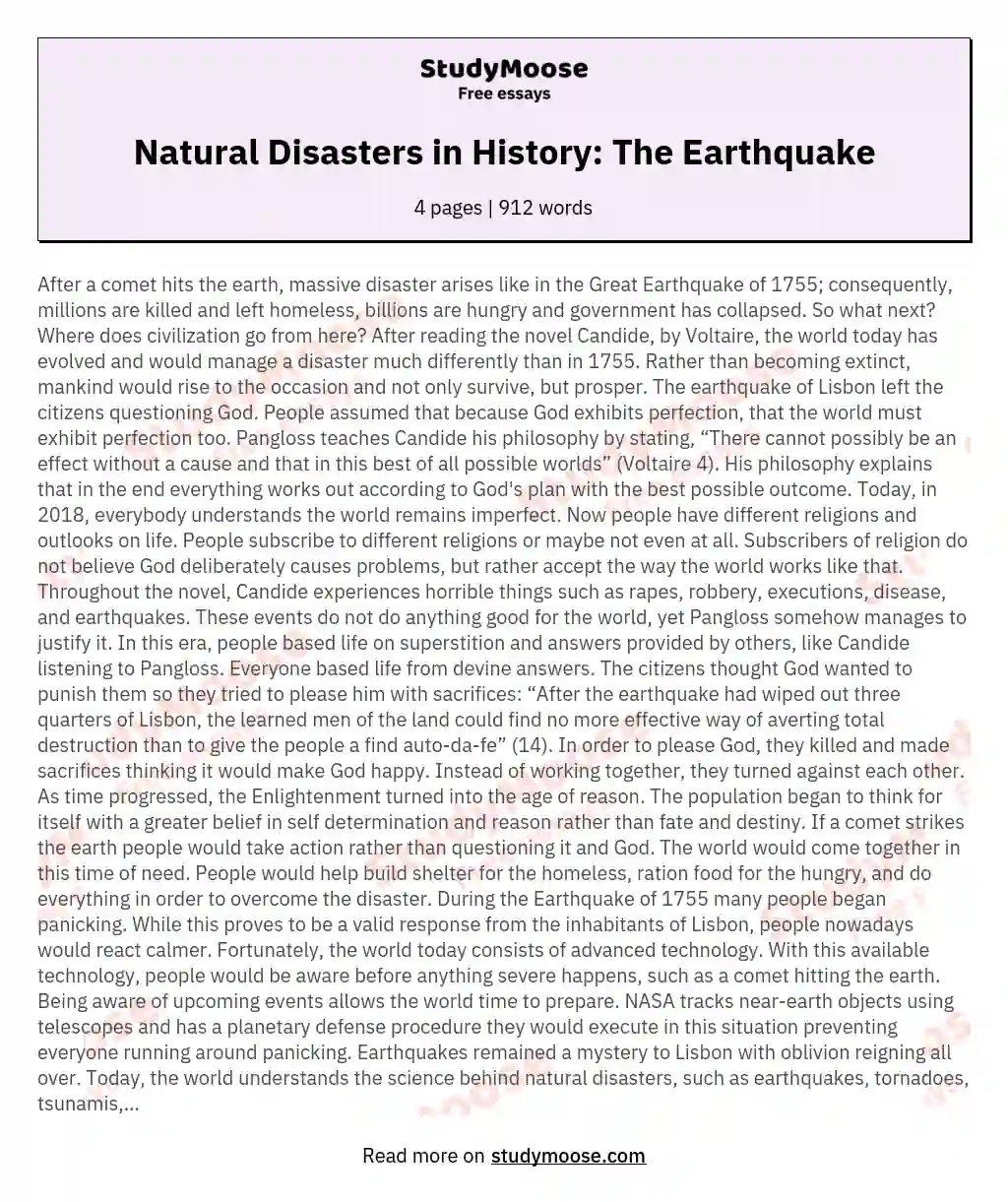Natural disasters have shaped human history in profound ways, offering lessons that are critical for understanding our vulnerabilities and improving our responses. From earthquakes and tsunamis to hurricanes and wildfires, these catastrophic events have not only caused immense loss of life and property but have also influenced societal structures, economies, and policies. This article delves into the historical lessons learned from natural disasters, highlighting key events, their impacts, and how humanity can better prepare for future occurrences.
The Nature of Natural Disasters
Natural disasters can be classified into several categories, including geological (earthquakes, volcanic eruptions), meteorological (hurricanes, tornadoes), hydrological (floods), and biological (pandemics). Each type has distinct characteristics and requires different preparedness strategies. Understanding these categories helps in developing comprehensive disaster management plans.
Historical Case Studies of Natural Disasters
Throughout history, numerous natural disasters have left indelible marks on societies. Here are a few significant case studies:
The 1906 San Francisco Earthquake

The San Francisco earthquake, which struck on April 18, 1906, is one of the most destructive earthquakes in U.S. history. With a magnitude estimated between 7.7 and 8.3, it caused widespread devastation, including fires that consumed over 28,000 buildings.
- Death Toll: Estimated at 3,000.
- Lessons Learned: The disaster highlighted the need for improved building codes and urban planning in seismic zones.
- Preparedness: The event prompted the establishment of the United States Geological Survey (USGS) and improved earthquake monitoring systems.
The 2004 Indian Ocean Tsunami
On December 26, 2004, a massive undersea earthquake off the coast of Sumatra triggered a series of devastating tsunamis that affected 14 countries and resulted in the deaths of approximately 230,000 people.
- Impact: Entire communities were wiped out, and millions were displaced.
- Lessons Learned: The disaster underscored the need for an early warning system in the Indian Ocean region.
- Response: It led to the establishment of the Indian Ocean Tsunami Warning System, which has significantly improved tsunami preparedness.
Hurricane Katrina (2005)
Hurricane Katrina, one of the deadliest hurricanes in U.S. history, struck the Gulf Coast in August 2005, resulting in catastrophic flooding, particularly in New Orleans.
- Death Toll: Over 1,800 people.
- Lessons Learned: The disaster exposed significant shortcomings in emergency management and response coordination.
- Policy Changes: Resulted in reforms in federal disaster management policies and the establishment of the National Response Framework.
The Role of Technology in Disaster Preparedness
Advancements in technology have played a crucial role in improving disaster preparedness and response efforts. Key innovations include:
- Early Warning Systems: Technologies such as seismic sensors, satellite imagery, and weather forecasting have improved the ability to predict disasters.
- Communication Tools: The rise of social media and mobile apps has enhanced real-time communication between authorities and affected populations.
- Geographic Information Systems (GIS): GIS technology helps in mapping vulnerable areas and planning evacuation routes.
Community Resilience and Recovery

Building community resilience is essential for effective disaster response. Communities that invest in preparedness and recovery plans tend to recover more quickly. Factors contributing to resilience include:
- Education and Training: Community drills and educational programs can help residents understand risks and response strategies.
- Infrastructure Investments: Strengthening buildings, roads, and emergency services can mitigate the impacts of disasters.
- Community Engagement: Involving local populations in planning and response efforts fosters a sense of ownership and readiness.
Climate Change: A New Challenge

As climate change continues to alter weather patterns, the frequency and intensity of natural disasters are expected to increase. Some implications include:
- Increased Flooding: Rising sea levels and more intense storms can lead to more frequent and severe flooding events.
- Wildfires: Higher temperatures and prolonged droughts contribute to an increased risk of wildfires.
- Global Displacement: Climate change is projected to displace millions, creating “climate refugees” who may be vulnerable to further disasters.
Policy Recommendations for Future Preparedness

To better prepare for future natural disasters, several policy recommendations can be made:
- Strengthening Regulations: Implementing stringent building codes and land-use planning can reduce vulnerability.
- Investment in Research: Funding research on disaster prediction and response should be a priority for governments.
- International Collaboration: Countries should work together to share knowledge, resources, and best practices for disaster preparedness and response.
The historical lessons learned from natural disasters underscore the importance of preparedness, community resilience, and effective response strategies. As we face the increasing threats posed by climate change, it is imperative that we apply these lessons to improve our defenses against future catastrophes. By investing in technology, engaging communities, and fostering international collaboration, we can enhance our ability to withstand the inevitable impacts of natural disasters. Ultimately, the key takeaway is that while we cannot prevent natural disasters, we can certainly mitigate their effects and save lives through informed preparation and proactive policies.









